The Narbonne House is a true treasure of Salem Maritime National Historic Site, but it is often overlooked by visitors. More modest than the Derby House, the Narbonne House, located on Essex Street in Salem, MA, was built in 1675. Multiple families lived in this home from c. 1675 until the early 1960’s, when the National Park Service purchased the property. Since most of the residents lived in the home before municipal trash pickup, waste was thrown into the yard. What these residents threw away can provide archeologists and historians with a window into parts of their lives that may have been otherwise unknown.
Digging up the Past
In 1973-1975, archeological excavations around the property led to the recovery of approximately 150,000 artifacts, revealing valuable information about the various residents.
The Ives/White Family (c. 1675-1699)
Thomas Ives, a butcher, purchased the land from his neighbor to build a small family home. Originally, the home consisted of one room on the first floor and one room on the second floor with a steeply pitched roof. Ives’s first wife, Martha, had three children. After her death, sometime between 1675 and 1679, Ives remarried. His new wife, Elizabeth, had four children. Thomas Ives died in 1695, at which time Elizabeth married John White. The family remained in the home until 1699 when they sold the property to Simon Willard.
Detecting the past through Probate Records
Thomas Ives’s probate record indicates that the Narbonne House had “a northern and southern room as well as a kitchen” at the time of his death in 1795. It is believed that the Ives/White family was responsible for the first additions to the home. Also mentioned in the probate record is a shop, which was presumably used as a butcher shop. During the archeological investigation, no intact 17th-century features were discovered. However, there were artifacts from the 17th-century found at the site. Some of these include: domestic and imported redware, diamond-paned window glass (17th century), clay pipes, tin glazed earthenware (c. 1630-1790), Wrotham slipware (c. 1612-1700), North Devon sgraffito slipware (c. 1650-1710), and German stoneware (c. 1575-1775). These findings tell us that the Ives/Whites were a modest family that opted for utilitarian ceramic wares and used their resources for necessary improvements to the home rather than buying a larger one.
The Willard Family (1699-1750)
Simon Willard was born in Concord, MA and moved to Salem in 1681. He worked as a clothier and when he and his family moved into the home, his four children were in their teens. When Mrs. Willard died in 1721, some of the children, now adults, returned to the house to take care of their father as was customary for the period. After Simon Willard passed away, his children remained in the home until 1750 when they sold it to the Hodges.
A Case for Improvements to the House
The Willards made some architectural and structural changes to the home and yard. They transformed the lean-to in the back of the home to a gambrel roof ell. Fragments from casement diamond-paned windows were unearthed during the archeological investigations. These fragments may indicate that the Willards were financially better off than the Ives/White family and able to make more sophisticated and costly changes such as changing out the windows to the more fashionable sash style. The Willards were also responsible for installing a wood-lined well behind the house. Some of the artifacts that may be attributed to the Willards include: domestic and imported redware, coarse buff-bodied earthenware (late 17th to early 18th-centuries), tin glazed earthenware (mostly British c. 1630-1803), English white salt glazed stoneware (c. 1730-1770), German stoneware (c. 1575-1775), onion shaped wine bottles (late 17th to early 18th-century), and English brown stoneware (throughout the 18th-century). These ceramic types reflect a trade solely with Europe, which may be consistent with other families living in New England at this time.
The Hodges and Tenants (1750-1780)
Captain Joseph Hodges purchased the house from the Willard family in 1750. Hodges was a successful mariner who owned one sloop and two schooners and improved his financial status throughout the course of his life. His will (c.1778) mentions “his mansion house… in East parish” which is also listed in his probate record after he had sold the house on Essex Street to Jonathan Andrew. The mansion house in East parish is most assuredly not the Narbonne house, which suggests that prior to 1778, Hodges may have rented out the Narbonne house. Unfortunately there are no records providing the names of tenants, but few changes were made at the house during this time which could be attributed to renters instead of owners living there.
The artifacts that may be connected to the Hodges and their renters include: domestic and imported redware and stoneware, plain and hand-painted creamware (c. 1760 -1780), whieldon ware (c. 1750), English wine bottles (mid 18th-century), a decorated brass button, a bone handle knife (mid to late 18th-century), and a bottle seal dated 1772 with the letters “T. _ean.”
The presence of finer, refined English ceramics (hand painted creamware) suggest that a member from the upper middle class occupied the site. In “Small Things Forgotten,” James Deetz writes that hand-painted creamware was rare on sites that were occupied by people of the lower or middle class. The creamware may have belonged to the Hodges, the tenants, or a later family, but to be able to afford the beautiful hand-painted creamware, the owner was probably upper middle class. This suggests that the social status of residents of the Narbonne House was improving.
The Andrews Family (1780-1820)
Jonathan Andrews, a relatively prosperous tanner, purchased the home from Hodges in 1780. Andrews died about a year after purchasing the home and his wife, Mary, and their children remained in the home until Mary’s death in 1820. During this period, the Andrews’ updated the interior and exterior to the more fashionable federal style. Mantles were added on the inside, a carriage house was built in the yard, and two major trash pits associated with Mary Andrews were uncovered in the backyard. Rather than simply tossing trash out of a window or door, the second half of the eighteenth-centuy began a more refined trash disposal routine where trash was thrown into dug pits. Aside from these changes to the home, Mary also collected fine ceramic wares from Europe and China. She lived in Salem during the great age of sail, so these high-end goods were more readily available and less expensive in the port city.
Some of the artifacts found include: domestic and imported stoneware and redware, jackfield ware (c. 1740-1790) creamware (c. 1760-1780), pearlware (c. 1780-1840), Chinese porcelain (blue and white, gilded, and polychrome all present, c. 1790-1820), American and European coins (18th and early 19th-century), shoe buckle (18th-century), wig curler, dry bodied stoneware (black basalt and rosso antico), and wine bottles (18th and early 19th-century). Not only was this a period of higher consumerism in America and, more specifically, Salem due in part to more goods coming into the port, but Mary Andrews was a widowed woman who of decent means. She inherited money following the death of her husband and, two years after his death, her father. Mary Andrews was a widowed women living at a prosperous time in Salem and American history, and much more can be learned about her and her family by studying the artifacts she selected to buy and use.
The Narbonne Family (1820-1905)
The Narbonne Family were descended from the Andrews family, and Sarah Narbonne, already widowed, took ownership of the house c. 1840. She lived in the home with her daughter, Mary, who never married. Both women were seamstresses, but they also owned a cent shop in the northeast portion of the home. By the 1840’s, Salem’s trade was noticeably in decline leading to more locally made ceramics and goods. Some artifacts that may have belonged to the women or were stock for their shop include: whiteware (c. 1830 and onward), rockingham ware (c. 1850-1950), wine bottles, yellow ware (c. 1840-20th century), American coins (19th to early 20th-century), sewing needles, thimbles, and other items associated with the shop.
In a newspaper article from the late 19th-century, Sarah Narbonne is pictured in the home in front of a china cabinet that includes 18th and early 19th-century ceramics that may have been passed down from Mary Andrews. After the death of Mary Narbonne in 1905, the home was owned by the Hale family and rented out and eventually purchased by the Park Service.
The Narbonne house and the artifacts associated with its inhabitants can teach us a great deal about the families who lived there. Additionally, the house was occupied by widowed or single women from around 1781-1905 and provides an interesting look at women in Salem during this time.
If you are interested in learning more, or seeing the excellent exhibit case (that is conveniently organized by family!) take the “Home From the Sea” tour at Salem Maritime.
Sources
Deetz, James. In Small Things Forgotten. New York: Doubleday, 1977.
Hume, Ivor Noel. A Guide to Artifacts of Colonial America. Philadelphia: University of Pennsylvania Press, 1969.
Karkline, Karlis Ed. Studies in Material Culture Research, SHA, 2000.
Maloney, Robin. “The Narbonne House,” Pickled Fish and Salted Provisions Vol. 2, Number 10, 2000.
Moran, Geoffrey P. “Trash Pits and Natural Rights of the Revolutionary Era.” Archaeology 29:194-202, 1976.
Moran, Geoffrey P. Edward F. Zimmer, and Anne E. Yentsch. Archeological Investigations at the Narbonne House. Salem Maritime National Historic Site, Salem, MA Resources Management Study No. 6. Division of Cultural Resources, North Atlantic Regional Office, National Park Service, U.S. Department of the Interior, Boston, 1982.

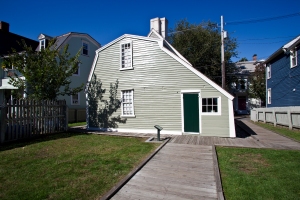
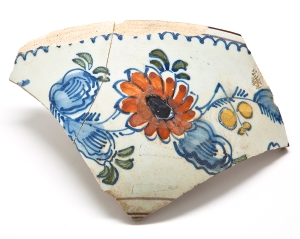
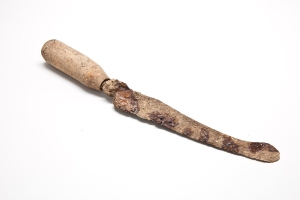
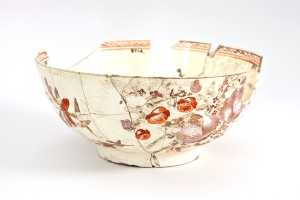
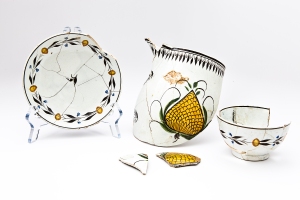




Pingback: What’s buried in your backyard? « Connect Shore